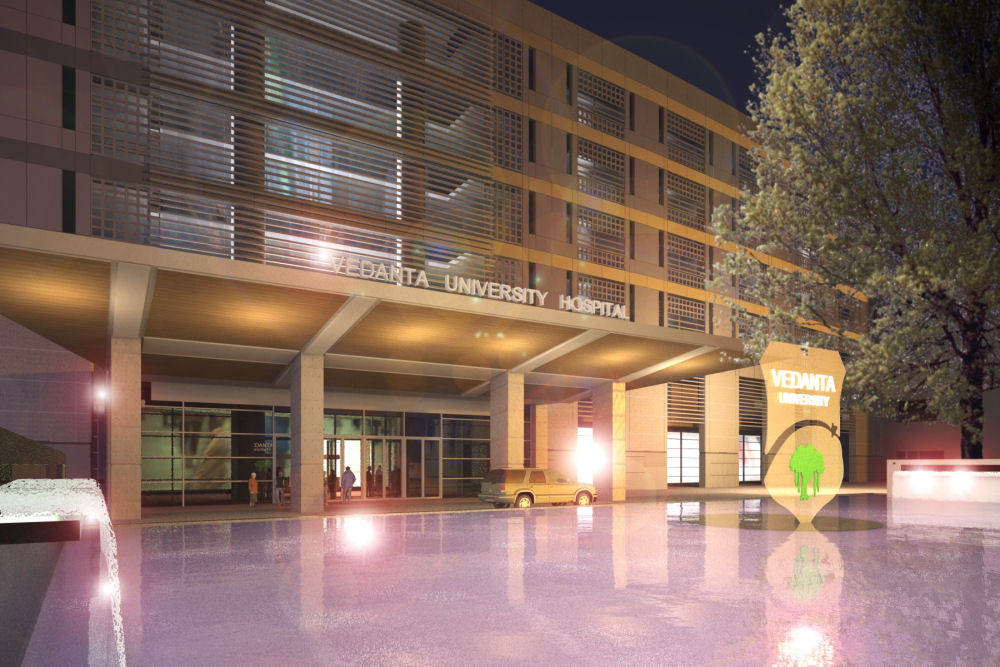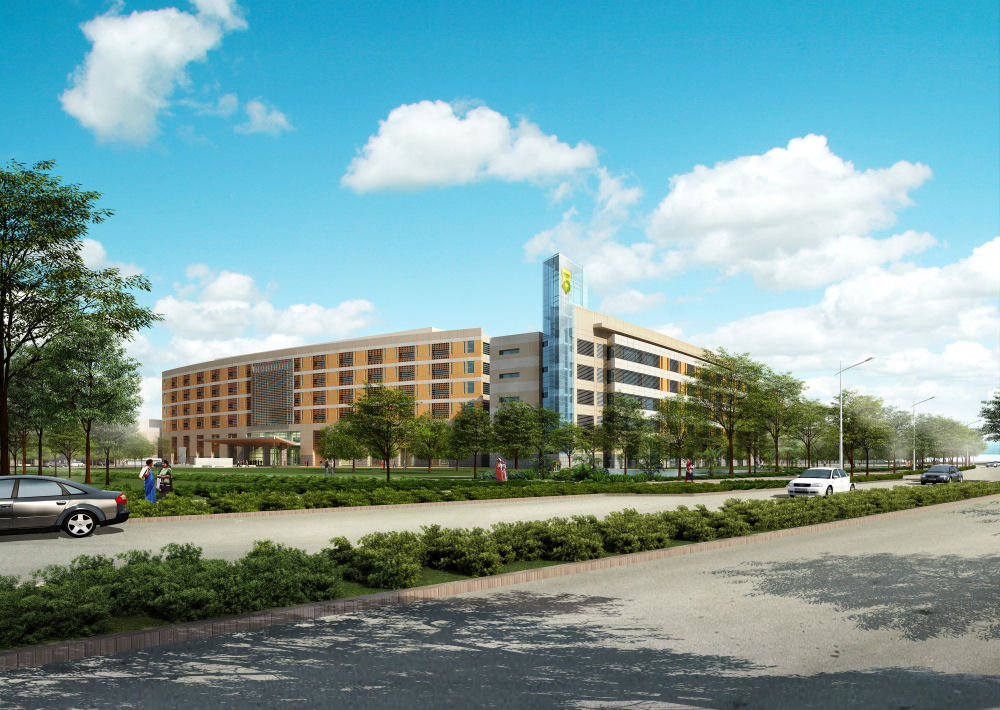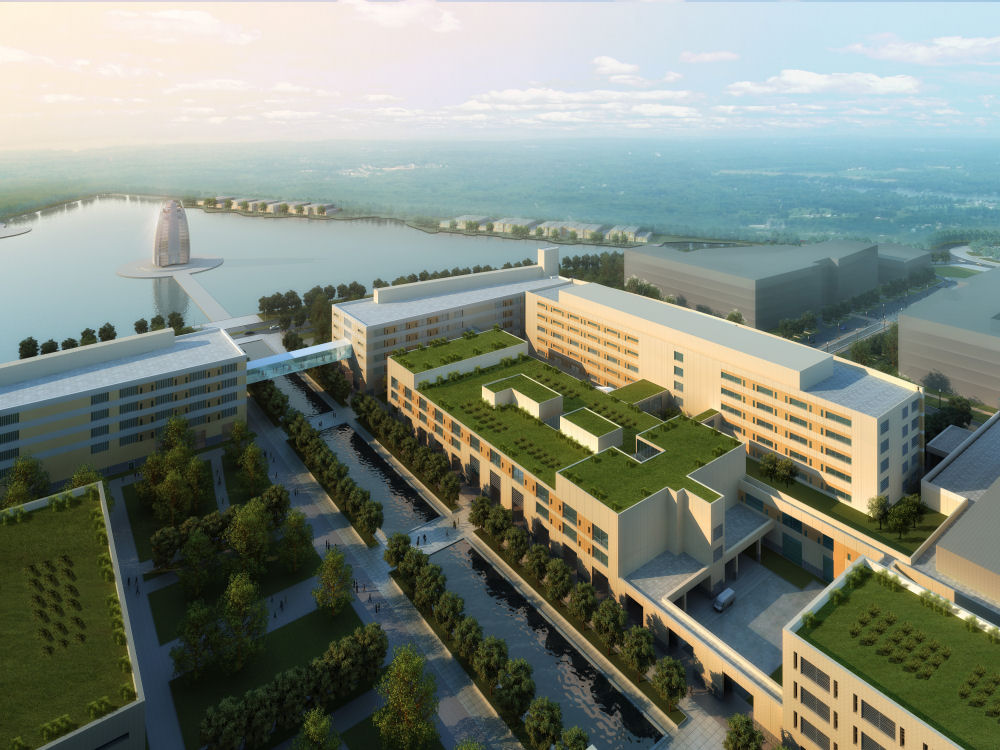Archive for September 6th, 2009
Dear Esteemed Chief Minister Mr. Patnaik and Member of Parliament Mr. Khuntia,
I am writing this note to plead before you the need to have the ESI medical college in Rourkela. ESI administration has made an easy decision and you both know from your long public career that easy decisions are not always the best decisions. If we look at the existing ESI medical colleges there are many which are not locate in the state capital. The decision in the last 2-3 years to have the ESI medical College in Himachal Pradesh to be located in Mandi (150 km from Shimla) could be a basis for arguing why this ESI medical college for Orissa could not be located in Rourklela?
Here are the reasons I believe why thi ESI medical should be located in Rourkela instead of Bhubaneswar:
1. Orissa has close to 50+ ESI medical clinics and a half dozen or so medical hospitals. These ESI clinics are the Tier-III medical facilities where the patients go initially for the consultation. Based on the severity of their cases, they are referred to the Tier-II ESI medical hospitals. Most of these Tier-II ESI medical hospitals are located closer to Rourkela than Bhubaneswar. Based on the numbers of members and their usage pattern, one could easily see most of these members live in places closer to Rourkela
than Bhubaneswar.
2. When these ESI members travel to these medical hospitals, the out of pocket allowance they receive from ESI is meager. So it would be an additional hardship for these members to travel to Bhubaneswar at a greater distance and a costlier city for specialty medical care.
3. Since most of the Tier-II medical facilities are located closer to Rourkela, it would be a boon for the ESI doctors working in these hospitals to get additional training and the patients could be referred for additional diagnostics (CAT scan, MRI scan, Ultrasound, advanced blood works) and thus improving the decision making if the medical college to be located closer to the existing hospitals.
4. Most of these members live in the geographical segment of Orissa that is under the evil grip of the growing Sickle Cell disease and cerebral malaria. Both these medical challenges require quick access to specialty medical care which could be provided if these patients travel to the specialty medical closer to their home which again makes Rourkela a more ideal location.
5. ESI would be spending 600 crores to build and run this medical college. Orissa should not lose this investment. Also 50% of the seats would be reserved for students from the domiciled state which would again benefit our children if we get this medical college in Orissa.
6. The state has to give a contiguous cluster of 35 acres of land for this ESI medical college at no cost to ESI. This kind of land would cost close to at least 10 crores an acre in Bhubaneswar whereas it would cost no more than a crore in Rourkela. From a pure selfish perspective, why not we give 35 crores (35 acres in Rourkela) rather than 350 crores (35 acres in Bhubaneswar) to get this investment of 600 crores from ESI.
We are looking up to you to work across the party lines to get this beneficial scheme for Orissa. To have this medical college in Rourkela would significantly improve the health of the growing workforce and thus bring in additional investments for Orissa. We know you both could make this happen and the ESI members would be eternally thankful to you for your leadership.
With my best regards,
Purna
ps – Originally from Bhubaneswar but currently lives in North America
September 6th, 2009
Following is from http://www.jensenpartners.com/projects/vedanta-university-teaching-hospital.
The Vedanta University Teaching Hospital located in the State of Orissa, India, will be the first building of the ambitious Vedanta University Master Plan. As a first building, the hospital’s orientation, program and design represent a signifi¬cant opportunity to launch Vedanta University and provide connectivity between the campus and the community.
The Vedanta Teaching Hospital was programmed initially for 500 acute care beds and 67 intensive care beds (Phase l). In a future phase (Phase2), the bed
count will double.
The Guiding Principles in the development of the Space Program relate program-matically to the idea of creating true synergy between research, teaching and clinical care, as well as creating Centers of Excellence in the areas of Cardiology and Endocrinology. Physically, the Space Program is conceived as highly modu¬lar so as to be able to grow and evolve with ease and flexibility. The Inpatient and Outpatient spaces are conceived as relating programmatically by level.
The architectural and operational framework of the organization’s information technology capability is envisioned as a mission-critical 24/7 operational util¬ity service delivered and managed in a cost-effective manner. In addition, the selection of state-of-the-art medical equipment for both patient care and clinical research will be a critical success factor for the university.
The right side of that page lists other projects handled by Jensen Partners. It includes UCLA and Emory University (Atlanta).
September 6th, 2009
Update: This article in healthcaredesignmagazine.com also mentions the design. Some Chinese sites such this one and this one also mention it. This article at the freelibrary.com shows that Perkin+Wills is one of the top architectural firms in LA county and its 2008 billings included billing Vedanta University Hospital.



Perkins+Will is designing the Vedanta University Medical college and Hospital. The BCDC (Building design+construction) network and World Architecture News have put out some of the initial pictures of the design. Both write the following:
Working together with the Anil Agarwal Foundation, Perkins+Will have developed the master plan for the Medical Precinct of a new teaching hospital in the extremely remote section of Puri, Orissa, India.
Vedanta University Teaching Hospital is part of a very ambitious plan to develop this rural area into a global center of education and healthcare that would be on par with Harvard, Stanford and Oxford. The 500-bed world-class facility, set to open in 2011, would serve as a regional hub for critical medical specialties such as cardiology and diabetes and focus research on prevalent public health issues in the surrounding area. With the heart of the project geared toward giving back to the community, Perkins+Will architects have carefully incorporated the area’s cultural values by working with local materials and artisans to capture India’s modern art trends within the building plans.
Additionally, some of the hospital’s sustainable features will include daylighting, atriums, storm water management and water conservation through site run-off and an onsite sewage treatment plant, use of local materials, landscaping with local plants and green roof.
September 6th, 2009
Update 3: Expressbuzz mentions that the unergraduate program under discussion will be at Bangalore. Following are some excerpts.
The Indian Institute of Science’s (IISc) much-anticipated Undergraduate (UG) programme is most likely to be held at the institute’s Bangalore campus, and not at its proposed campus at Chitradurga.
This is part of a series of changes that the Institute incorporated into the original plan to bring on board faculty members who had expressed reservations on the programme.
… The revised proposal fleshes out details of the UG programme, and expands on proposals mentioned in the earlier one. To allay faculty fears, the new proposal specifies that the UG programme will not compromise the institute’s postgraduate nature, by limiting admissions to around 100 per year. “In the next 5 years, the envisaged undergraduate student population of the IISc will never exceed a number (400-500) which is more than 20 per cent of the post graduate population,” says the proposal.
Thanks to Abi for the pointer.
Update2: See http://nanopolitan.blogspot.com/2009/09/undergraduate-program-at-iisc.html for more links and past coverage on this.
Update: There have been some earlier news that the undergraduate program will be in a new campus at Chitradurga which is 200 kms from Bangalore. Chitradurga is to the North West of Bangalore. (Mysore is to the south west.)
Following are excerpts from a report in the Telegraph by Charu Sudan Kasturi.
… IISc is planning to introduce a unique four-year, research-based undergraduate programme, including interaction between the students and its researchers,
… The draft course prepared by the institute received the stamp of approval from the faculty at a meeting on September 2.
… The institute is hoping the undergraduate programme emerges a model for other institutions involved in higher education and research to follow. It will be titled a bachelors in science (BS) programme in a specialisation of the student’s choice — for instance in physics, chemistry or biology.
… IISc sources were tight-lipped about the selection process they plan to use to pick students for the course, but said it would be restricted to around 500 of the “brightest” students interested over the first five years.
… The undergraduate course structure drafted by the institute will in the first three years — over six semesters — aim at strengthening basic knowledge of classical scientific, mathematical and engineering subjects in students.
Students will have to study humanities — they can pick from courses in areas of history, philosophy, sociology and the management of science and technology.
After the first three semesters, students will have to pick a “stream” of their choice — a subject within the sciences and engineering that they wish to pursue in greater detail than other subjects.
While majoring in their chosen stream, students continue to study a certain minimum number of courses in other streams — to keep the course inter-disciplinary.
The final year of the course will largely be devoted to a research project each student must undertake.
September 6th, 2009
Indian School of Business (ISB), Hyderabad is ranked 15 in 2009 in Global MBA rankings by Financial Times, UK. It had a ranking of 20 in 2008. At 15 it is ranked higher than business schools at Cambridge, Yale, Oxford, Northwestern, Duke, Michigan, Berkeley, etc. In contrast none of the IIMs appear in the top 100.
While comparing IIMs to ISB, following are two aspects that stand out.
1. The faculty salary: Following is an excerpt from a report in Times of India that compares the salary of assistant professors at ISB with that of assistant professors at IIM and Harvard.
The memorandum says an assistant professor (AP) at Harvard gets $140,000 as annual starting pay, equivalent to Rs 23 lakh and Indian School of Business (ISB) pays over Rs 20 lakh to its APs. Against this, an IIM-A AP gets only Rs 5.5 lakh as starting pay annually.
$140,000 at Rs 48.9 per USD is Rs 68.5 lakh. So the mention above that it is equivalent to Rs 23 lakh must be based on purchasing power parity. Lets verify that.
As per this page the nominal GDP of India in 2008 is $1,209.686 Billion and as per this page the PPP GDP of India in 2008 is $3,288.345 Billion. So while 1 USD = Rs 48.9 nominally, using PPP 1 USD has the purchsing power of 48.9/2.71834592 = 17.99. Thus $140K has the purchasing power of 140K*17.99 = 25.18 lakhs.
So ISB’s salary for assistant professors at Rs 20 lakhs/year is about 80% of the salary paid to assistant professors at Harvard taking PPP conversion rate into account.
2. The governance: The following excerpt from Ila Patnaik’s article articulates the impact of governance on ISB’s ranking.
There is only one university in India which has autonomy on budget setting, recruits its own students, has flexible HR policies, etc., and this is the Indian School of Business. It is perhaps logical that, in 2008, ISB was ranked the 20th best MBA programme by The Financial Times, and in 2009 this rank was improved to 15. None of the IIMs feature anywhere. This is a striking contrast between enormous state expenditures on the IIMs failing to yield measurable results when compared with an alternative which has landed India in the top rankings of the world.
The Vedanta University bill allows it to have the governance structure that is mentioned in Ila Patnaik’s article.
In regards to being able to pay world class (purchasing power equivalent) salaries two aspects of Vedanta University will allow that: the initial donation of $1 Billion by Mr. Anil Agarwal (CNBC-TV18 recently interviewed him) and the resources that can be generated from the townships planned around the university.
The large number of students, eventually to reach 100000, will allow Vedanta University to offer some faculty (say Nobel laurates or would be Nobel laurates) more than (in nominal terms, not just PPP) their current salaries and thus lure them to Vedanta University.
September 6th, 2009


